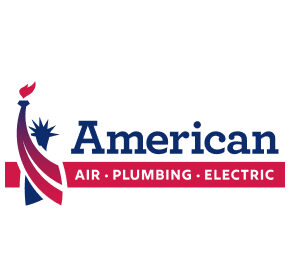With spring here and summer quickly approaching, it’s time to think of ways to weatherize your home to make it more durable and energy-efficient. To help you out, the pros at American Air, Plumbing, and Electrical have some helpful spring weatherization tips!
- Add Caulk and Weatherstripping to Your Doors and Windows
30% of household air leaks are found indoors and in windows. Once you seal up these areas, you will notice a significant difference in your energy bill. In addition to that, you’ll have better indoor air quality, temperature consistency, and an HVAC unit that doesn’t have to work overtime to provide the cooling that you need.Start by inspecting your doors and windows and check for worn-out weatherstripping. If you notice it getting old or deteriorating, check out new weatherstripping materials at your nearest home improvement store. There are various materials on the market such as vinyl, felt, foam, and even metal. If you’re looking for reasonably priced and durable materials, vinyl and reinforced foam are the way to go. In addition to adding weatherstripping, you can also add caulk to properly seal up any gaps or cracks around your doors and windows. - Insulate Your Attic Stairs
If you have pull-down attic stairs, you probably know that they are not well-sealed around the edges. Since your attic is the highest place in your home, it has a high likelihood of losing a great deal of cooling and air. To properly insulate your attic stairs, consider purchasing an attic stair cover. This cover resembles a tent made from aluminum foil and can be placed right at the attic door opening. It is easy to install and even comes with a zipper to ensure easy access to your attic. So, if you want to save up on your energy bill and ensure proper cooling in your home, consider getting this stair cover! - Have Your Insulation Inspected
It’s important to have the insulation in your home inspected to ensure you have enough insulation. Here are some signs that indicate you might not have enough insulation:- Inconsistent Temperatures
If you notice hot and cold spots and fluctuating temperatures throughout your home, it might be underinsulated. - High Energy Bills
Having a properly insulated home, whether it’s your walls, ceiling, attic, or crawlspace, can save you 20% on heating and cooling costs and 10% on overall energy costs. However, if your home is under-insulated, you will be noticing spikes in your energy bill. - Visual Inspection: Little Insulation Material in Your Attic
If you notice that your insulation level in your attic is below or level with the floor joists, you might not have enough insulation material. Check out this quick guide on proper attic insulation for more details.
- Inconsistent Temperatures

